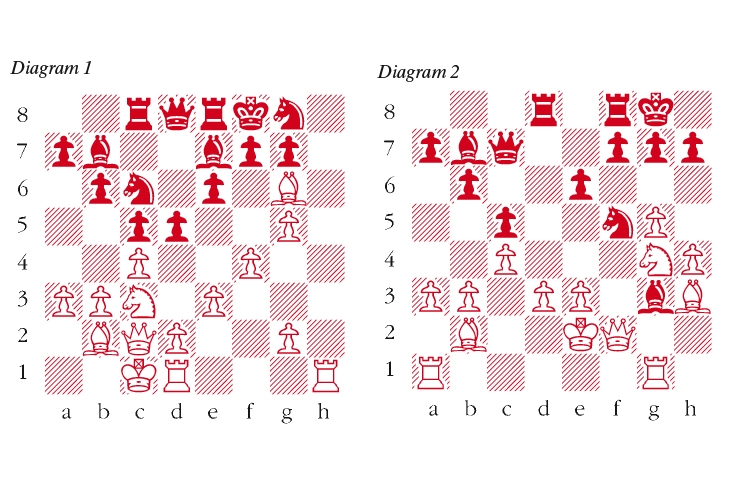The Azeri grandmaster Shakhriyar Mamedyarov has been distinguishing himself recently at both classical and speed chess time limits. Last month he emerged as the overwhelming winner of the elite tournament in Biel, taking first prize and defeating world champion Magnus Carlsen in their individual clash. Mamedyarov went on to St Louis where he took the bronze medal behind Hikaru Nakamura and Maxime Vachier-Lagrave, and in the process demonstrated an extraordinary originality in his choice of openings and power of attack. We join two of his games against former world title challenger Sergey Karjakin at the crucial moments.
Mamedyarov-Karjakin: St Louis Rapidplay 2018
(diagram 1)
18 Bh7 This proves good enough to win. Unfortunately for Mamedyarov he missed the beautiful 18 Nxd5!! which wins at once. The main point is 18 … exd5 (18 … fxg6 19 Qxg6 Nd4 20 Rh7 wins) 19 Bxg7+! Kxg7 20 Rh7+ Kf8 21 Rxf7 mate. After 18 Nxd5, Black’s only try is 18 … Nd4 but then 19 exd4 fxg6 (19 … exd5 20 Qf5 wins) 20 Ne3 cxd4 21 Qxg6 gives White a winning attack, based on moves such as Rh8 and Ng4-e5. 18 … Nf6 18 … d4, to close down some of White’s attacking avenues, is a better defence. 19 gxf6 Bxf6 20 g4 Ke7 21 g5 Bxc3 22 dxc3 Rh8 23 cxd5 exd5 24 c4 d4 25 Qe4+ Kd6 26 exd4 Kc7 27 dxc5 Qe8 28 Bxg7 Black resigns
Mamedyarov-Karjakin: St Louis Blitz 2018
(diagram 2)
Karjakin may have thought that his bishop thrust into g3 had stunted White’s kingside attack. If so, he was in for a shock. 22 Nh6+! gxh6 This loses at once. Black had to try 22 … Kh8 23 Bxg7+ Kxg7 24 Nxf5+ exf5 25 Qxg3 f4 26 Qxf4 Qxf4 27 exf4 Rd4. Although White is two pawns up in the endgame, he has an exposed king and weak pawns and so still has work to do to achieve the win. 23 gxh6 The open g-file renders Black’s defensive task hopeless. 23 … f6 24 Bxf5 exf5 25 Rxg3+ Kh8 26 Rg7 Qd6 27 Qxf5 Qh2+ 28 Kd1 Bf3+ 29 Kc1 Black resigns
After the rapid and blitz in St Louis came the main tournament at classical time limits. Play was characterised by some dour endgame marathons as well as a record low percentage of decisive games. It might appear, on the basis of the evidence from all three events that there is now a trade-off between fast time limits, creating exciting and decisive chess, and classical limits, with accurate wars of attrition, which emphasise defensive technique above all. The chess world must decide which option it prefers. Cricket survives well even given the possibility of draws, while tennis, for example, has eliminated draws entirely. In chess, St Louis may be a turning point.
Raymond Keene
Shak attack

issue 01 September 2018




Comments